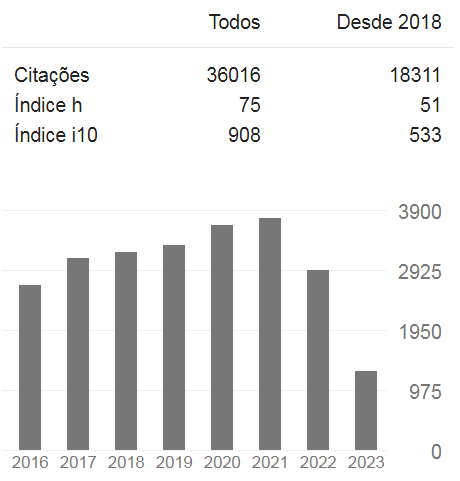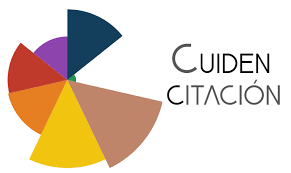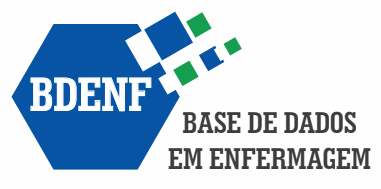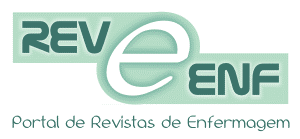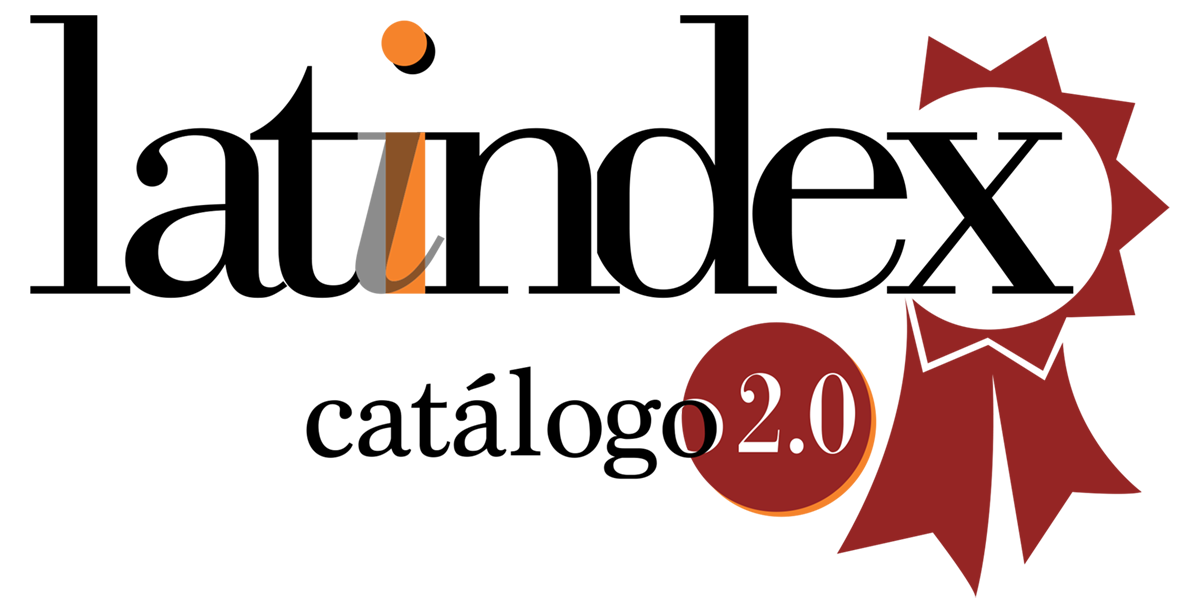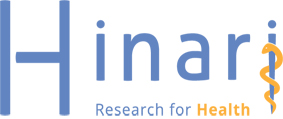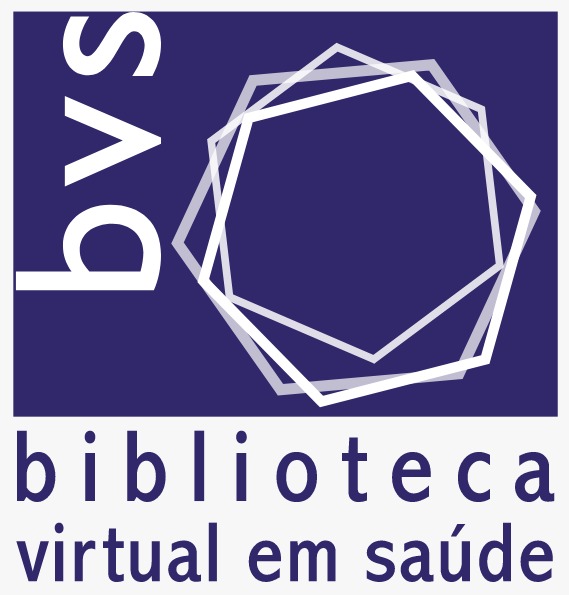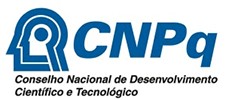Strategies for the development of communication in an urgency and emergency hospital
DOI:
https://doi.org/10.5935/1415-2762.20200045Keywords:
Nurses, Male, Hospitals, Professional Competence, Strategies, Communication, LearningAbstract
Objective: to identify and develop strategies for improving communication skills in hospital nurses. Methods: exploratory study, with a qualitative approach, type of intervention research. The scenario was constituted by a public teaching hospital, a reference in urgent and emergency care, located in the interior of São Paulo. The investigation took place from November 2016 to March 2017, in which 21 nurses participated. The operative group technique was used to identify and develop communication skills, with a clinical case study as support for the intervention; subsequently, individual interviews were conducted to verify the effectiveness of the applied intervention. Data analysis took place through inductive thematic analysis. Results: seven operational learning groups were carried out, in which the participants, through the intervention, identified collective strategies to improve the communication process, such as: formalized documents; communication channels; meetings; multidisciplinary discussion groups; and the use of information and communication technologies: Whatsapp. After the intervention, the participants applied the strategies raised in the group. Conclusion: the implementation of strategies that can bring improvements to communication in the hospital context should contribute to the unification of information and a better understanding of professionals about their work process, thus promoting transformations in the professional praxis of nurses, as well as in their attitudes, making them encouraged and involved with the institution's ethical and political commitment.
Downloads
References
Henriques SH, Soares MI, Leal LA. Applicability assessment of the portuguese version of a competency questionnaire for hospital nurses. Texto Contexto Enferm. 2018[citado em 2019 jun. 20];27(3):1-9. Disponível em: http://www.scielo.br/pdf/tce/v27n3/0104-0707-tce-27-03-e2140017.pdf
Holly C, Poletick EB. A systematic review on the transfer of information during nurse transitions in care. J ClinNurs. 2014[citado em 2019 jun. 20];23(17-18):2387-95. Disponível em: http://onlinelibrary.wiley.com/doi/10.1111/jocn.12365/full
Accreditation Canada. The value and impact of health care accreditation: a literature review. Canadá. 2015[citado em 2019 jun. 20];17. Disponível em: https://aventa.org/pdfs/valueimpactaccreditation.pdf
Lee JY. Effective communication for patient safety. J Korean Med Assoc. 2015[citado em 2019 jun. 20];58(2):100-4. Disponível em: http://synapse.koreamed.org/search.php?where=aview&id=10.5124/jkma.2015.58.2.100&code=0119JKMA&vmode=FULL; https://doi.org/10.1016/j.jopan.2018.01.003
Baltor MRR, Borges AA, Dupas G. Interaction with children with cerebral palsy: communication and stigma. Esc Anna Nery Rev Enferm. 2014[citado em 2019 jun. 20];18(1):47-53.Disponível em: http://www.scielo.br/pdf/ean/v18n1/1414-8145-ean-18-01-0047.pdf
Broca PV, Ferreira MA. Communication process in the nursing team based on the dialogue between Berlo and King. Esc Anna Nery Rev Enferm. 2015[citado em 2019 maio 20];19(3):467-74. Disponível em: http://www.scielo.br/pdf/ean/v19n3/en_1414-8145-ean-19-03-0467.pdf
Hamester MMM, Moura GL, Fishmann AA, Gaspary E, Balsan LAG. Communicative role of workers for national policy humanization: the case of a university hospital. RAHIS Rev Adm Hosp Inov Saúde. 2015[citado em 2019 jun. 20];12(2):34-43. Disponível em: http://revistas.face.ufmg.br/index.php/rahis/article/view/2377/1578; http://dx.doi.org/10.21450/rahis.v12i2.2377
Galvão EFC, Galvão JB. Pesquisa intervenção e análise institucional: alguns apontamentos no âmbito da pesquisa qualitativa. Rev Ciênc Soc. 2017[citado em 2019 maio 20];1:54-67. Disponível em: file:///C:/Users/User/Downloads/373-752-1-SM%20(1).pdf
Pichon-rivère E. O processo grupal. 8ª ed. São Paulo: WMF Martins Fontes; 2009.
Dutra WH, Corrêa RM. Operative group as a therapeutic-pedagogical instrument for promoting mental health at work. Psicol Ciênc Prof. 2015[citado em 2019 ago. 13];35(2):515-27. Disponível em: http://www.scielo.br/pdf/pcp/v35n2/1982-3703-pcp-35-2-0515.pdf
Braun V, Clarke V. Using thematic analysis in psychology. Qual Res Psychol. 2006[citado em 2019 jun. 20];3(2):77-101. Disponível em: http://dx.doi.org/10.1191/1478088706qp063oa
Santos EI, Gomes AMT, Marques SC. Occupational accidents and protective practices in social representations of nurses concerning their vulnerability. Rev Baiana Enferm. 2015[citado em 2019 jul. 25];29(4):391-9. Disponível em: https://portalseer.ufba.br/index.php/Enfermagem/article/view/13802/pdf_20
Trigueiro E, Leite JEL, Dantas DNA, Coura AS, Enders BC. Profile and positioning of the nurse manager regarding to the nursing process. Esc Anna Nery Rev Enferm. 2014[citado em 2019 jul. 27];18(2):343-9. Disponível em: http://www.scielo.br/pdf/ean/v18n2/en_1414-8145-ean-18-02-0343.pdf
Miccas FL, Batista SHSS. Permanent education in health: a review. Rev Saúde Pública. 2014[citado em 2019 maio 12];48(1):170-85.Disponível em: http://www.scielo.br/pdf/rsp/v48n1/en_0034-8910-rsp-48-01-0170.pdf
Caetano R, Garrafa V. Communication as a tool to promote and spread the Universal Declaration on Bioethics and Human Rights. Rev Bioétic. 2014[citado em 2019 jun. 20];22(1):34-44. Disponível em: http://www.scielo.br/pdf/bioet/v22n1/a05v22n1.pdf
Felippi A, Brandt G. Approaches between cultural studies and regional development: a theoretical methodologic proposal for studying communication on interdisciplinarity. Rev Bras Gest Desenvolv Regional. 2016[citado em 2019 jun. 20];12(4):44-63. Disponível em: file:///C:/Users/User/Downloads/2603-5598-1-PB.pdf
Hinchcliff R, Greenfield D, Westbrook JI, Pawsey M, Mumford V, Braithwaite J. Stakeholder perspectives on implementing accreditation programs: a qualitative study of enabling factors. BMC Health Serv Res. 2013[citado em 2019 jun. 20];13:437.Disponível em: https://bmchealthservres.biomedcentral.com/articles/10.1186/1472-6963-13-437
Lima SBS, Rabenschlag LA, Tonini TFF, Menezes FL, Lampert AN. Conflict management and resolution strategies for nurse managers. Rev Enferm UFSM. 2014[citado em 2019 jun. 20];4(2):419-28. Disponível em: file:///C:/Users/User/Downloads/11888-67249-1-PB.pdf
Araújo PC, Bottentuit Junior JB. The WhatsApp communication application as strategy in teaching Philosophy. Temática. 2015[citado em 2019 jun. 20];(2):11-23. Disponível em: http://www.periodicos.ufpb.br/ojs2/index.php/tematica/article/view/22939/12666
Cardoso RB, Ferreira BJ, Martins WA, Paludeto SB. Permanent education for the use of the electronic patient health record in nursing. J Health Inform. 2017[citado em 2019 jun. 20];9(1):25-30. Disponível em: http://www.jhi-sbis.saude.ws/ojs-jhi/index.php/jhi-sbis/article/view/429/302
Siman AG, Cunha SGS, Martins ES, Brito MJM. Management strategies for hospital accreditation. REME - Rev Min Enferm. 2015[citado em 2019 jun. 20];19(4):823-9. Disponível em: http://www.reme.org.br/artigo/detalhes/1043
Siman AG, Brito MJM. Mudanças na prática de Enfermagem para melhorar a segurança do paciente. Rev Gaúcha Enferm. 2016[citado em 2019 jun. 20];37(spe):e68271. Disponível em: https://doi.org/10.1590/1983-1447.2016.esp.68271
Published
How to Cite
Issue
Section
License
Copyright (c) 2020 Reme: Revista Mineira de Enfermagem

This work is licensed under a Creative Commons Attribution 4.0 International License.



